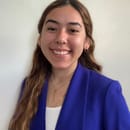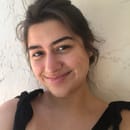Growing up, I’ve always been unapologetic about expressing myself and my identity on my own terms. I’ve never understood the labels or boxes that have always been imposed on me, and I often refused to accept them. Throughout elementary school, I took pride in being what many consider to be a “tomboy,” while simultaneously giving my mother a headache. She insisted that I needed to behave like a girl by wearing flowy dresses and playing with dolls. Meanwhile, I preferred to wear baggy boys’ clothes and wrestle with the neighborhood boys until late at night. To my mom’s frustration, everything I’d ever pick would be blue since it was simply my favorite color. I never understood why the things I did weren’t “girl-like”. What makes things solely for boys or solely for girls? Why can’t we just do things based on what we like?
Then came my teenage years. Around the age of 13, my older sister took me to get my hair trimmed upon my mom’s request. After having back length hair for all my life, I came back with ear-length hair. I’m pretty sure my mom almost fainted that day. I didn’t think it was such a big deal, but I eventually came to understand that Latinx mothers consider women’s beauty to be within their long, luscious hair. Oops. Over the years, I would dye my hair bright colors, change up my style continuously, ignore infinite questions about el novio, develop a deeply feminist and queer politic, and change like the cycles of the moon. I ditched my previous “tomboy” style and learned to embrace both my masculinity and femininity.
During this time, I was, and admittedly still am, a huge art geek. While I couldn’t create any art for the life of me, I loved learning about different art styles, painters and artworks. There was one specific piece of art that really opened my eyes to how I understand myself and planted the seed of gender fluidity in my mind. Frida Kahlo’s “Portrait with Cropped Hair” features a renowned artist with short hair and wearing an oversized suit. In comparison to her typical bright paintings where she dons traditional dresses and feminine accessories, many consider this to be a sad painting. Yet, for me, this painting became a mirror to my own identity. The androgynous nature of the painting provided 14-year-old me with a sense of comfort and validity that I would only come to understand five years later.
While I still think that labels are limiting, I realized during the end of my freshman year of college that I am non-binary. The best way I could describe coming to terms with my identity is feeling like there finally was a word to describe what I had been feeling all along. I always felt confined by womanhood and while, I do identify with femininity greatly, I realized that my gender identity lies outside what society dictates women are. I feel that I’m more than just a woman and flow across the gender spectrum.
If you’re cisgender or still confused about non-binary identity, allow me to give you a brief rundown.
What is non-binary?
Non-binary identity varies from person to person, but it generally focuses on a gender identity outside of the binary. Instead, many non-binary folks see gender identity as a spectrum, rather than a linear structure of male and female.
So non-binary people are androgynous?
Some non-binary people present themselves androgynously, but not all non-binary people do. There are non-binary people who present themselves in a feminine or masculine manner. There are non-binary people, such as me, who use both sometimes, or sometimes neither. Non-binary people come in a variety of different expressions and that’s the beauty of the fluid nature of it all.
What pronouns do non-binary folks use?
It depends from person to person, once again. Some non-binary folks identify with gendered pronouns such as she/her or he/him, meanwhile, others identify solely with they/them. As well, there are folks who don’t mind which pronoun is used, as long as it’s respectful. I recommend asking someone what their pronouns are before using any gendered language. It takes the burden off of non-binary people to have to mention their pronouns It goes a long way and it’s really appreciated!
P.S: If someone you know uses two sets of pronouns, such as he/they, try not to solely use the gendered pronoun, in this case, he. It’s often invalidating to non-binary people’s gender identity.
How can I be a better ally for non-binary folks?
Listen to non-binary people! As you can probably tell by now, there’s not an exact formula of what non-binary identity is. Therefore, it is essential to listen to your non-binary friends and how they personally choose to express their gender identity. Hold space for non-binary and gender nonconforming folks by uplifting their voices. For many of us, it takes us years to realize our own gender identity because it’s not talked about much.
As well, recognize that it’s okay to make mistakes since we are all human. As long as you apologize intentionally and try to fix your mistake, non-binary folks are very understanding and won’t hold it against you. We appreciate the effort and recognize that it’s usually not done with ill intent.
How do I know if I’m non-binary?
If this article raised doubts about your own gender expression, I recommend giving yourself time and not rushing your own process. It took me years to even get the proper language to describe myself, and I’m still learning every day. I recommend talking to non-binary folks around you. If that isn’t possible, I recommend looking for resources online about gender identity, expression and other forms of gender fluidity. With time, the pieces will begin to connect, and you’ll get to a place that feels comfortable.
It’s okay if you have to cycle through a couple of labels. Not everything you find out will fit and that’s okay! You have so much time to get to know yourself and grow into who you are.
I’m proud to say that in my last teenage year, I’ve come to terms with something I’ve been trying to understand since the moment I cut my hair at 13. I finally understand that it’s OK to like “girl” things and “boy” things. I finally feel comfortable with a gender identity that ebbs and flows. I finally have the words to describe me.



